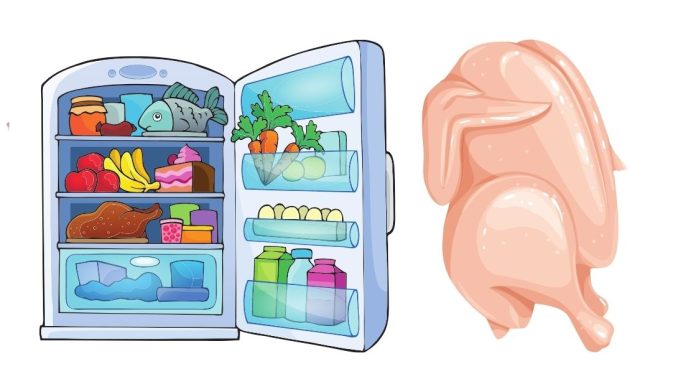When it comes to raw chicken, safety is a paramount concern due to its susceptibility to spoilage and potential contamination by harmful bacteria like Salmonella and Campylobacter. The question of whether factory-sealed raw chicken is still safe to cook and eat after being stored in the refrigerator depends on a few critical factors: storage time, temperature, and visual and olfactory cues that indicate spoilage.
How Long Can Factory-Sealed Raw Chicken Stay Safe in the Fridge?
The U.S. Department of Agriculture (USDA) recommends storing raw chicken in the refrigerator at or below 40°F (4°C) and using it within 1-2 days of purchase. Factory-sealed packaging can slightly extend this timeframe by reducing exposure to oxygen, which slows bacterial growth. However, even in vacuum-sealed conditions, the “safe-to-consume” window is still limited to about 3-4 days in the fridge. Beyond this period, the risk of bacterial growth increases significantly, even if the chicken remains sealed.
If the chicken has been stored longer than this guideline, it’s best to err on the side of caution and avoid consuming it.
to Tell If Raw Chicken Has Gone Bad
- Check the Expiration Date
Always refer to the “sell-by” or “use-by” date on the packaging. If the date has passed, even if the chicken has been sealed and refrigerated, it’s safer to discard it.
- Visual Inspection
Color: Fresh raw chicken should be a pale pink color. If the chicken appears gray, green, or has a slimy sheen, it’s likely spoiled.
Packaging: If the factory seal is puffed up, it may indicate gas production from bacterial activity, a clear sign of spoilage.
- Smell Test
Fresh chicken has a mild or neutral smell. If it emits a sour, ammonia-like, or otherwise unpleasant odor, it has likely spoiled. Keep in mind that raw chicken might have a faint smell when first opened, but this should dissipate quickly. Lingering odors are a red flag.
- Texture
While raw chicken is naturally moist, it shouldn’t feel slimy or sticky. A slimy texture is a common indicator of bacterial spoilage.
What Happens If You Eat Spoiled Chicken?
Consuming spoiled chicken can lead to foodborne illnesses, commonly known as food poisoning. Symptoms may include:
– Nausea and vomiting
– Diarrhea (sometimes bloody)
– Abdominal cramps
– Fever
These symptoms can appear within hours or days of consumption, depending on the type and amount of bacteria present. Severe cases may require medical attention, especially for individuals with weakened immune systems, children, pregnant women, and the elderly
Tips for Safe Handling and Storage of Raw Chicken
- Store Properly
– Place raw chicken on the bottom shelf of the fridge to avoid drips contaminating other foods.
– Keep it in its original packaging or transfer it to an airtight container.
- Freeze for Longer Storage
If you don’t plan to cook the chicken within 1-2 days, freeze it. Factory-sealed chicken can last up to 9-12 months in the freezer without significant loss of quality.
- Avoid Cross-Contamination
– Wash hands, utensils, and surfaces thoroughly after handling raw chicken.
– Do not wash raw chicken, as this can spread bacteria through splashing water.
- Cook to Safe Temperatures
Always cook chicken to an internal temperature of 165°F (74°C) to ensure harmful bacteria are destroyed. Use a meat thermometer for accuracy.
Conclusion
Cooking and eating raw chicken that has been left in your fridge while still factory-sealed can be safe within the recommended storage timeframe (1-2 days, up to 3-4 days under ideal conditions). However, using visual, olfactory, and textural checks is crucial to ensure it hasn’t gone bad. When in doubt, it’s better to discard questionable chicken than risk food poisoning. Prioritize proper storage and handling practices to minimize waste and ensure food safety.



